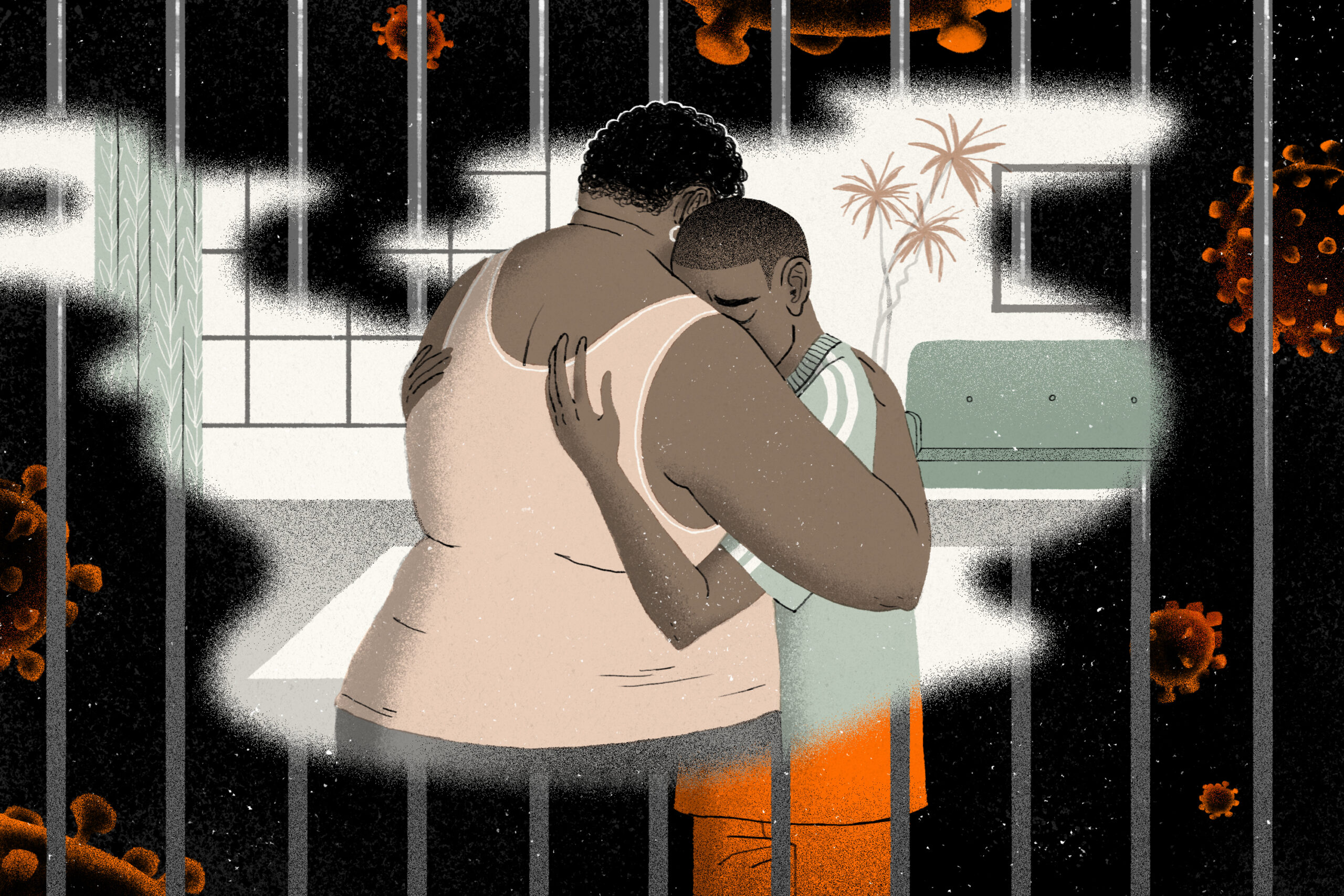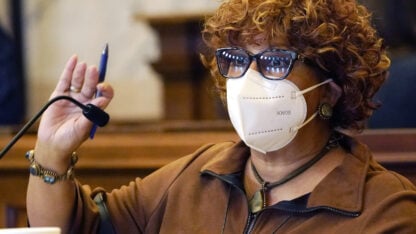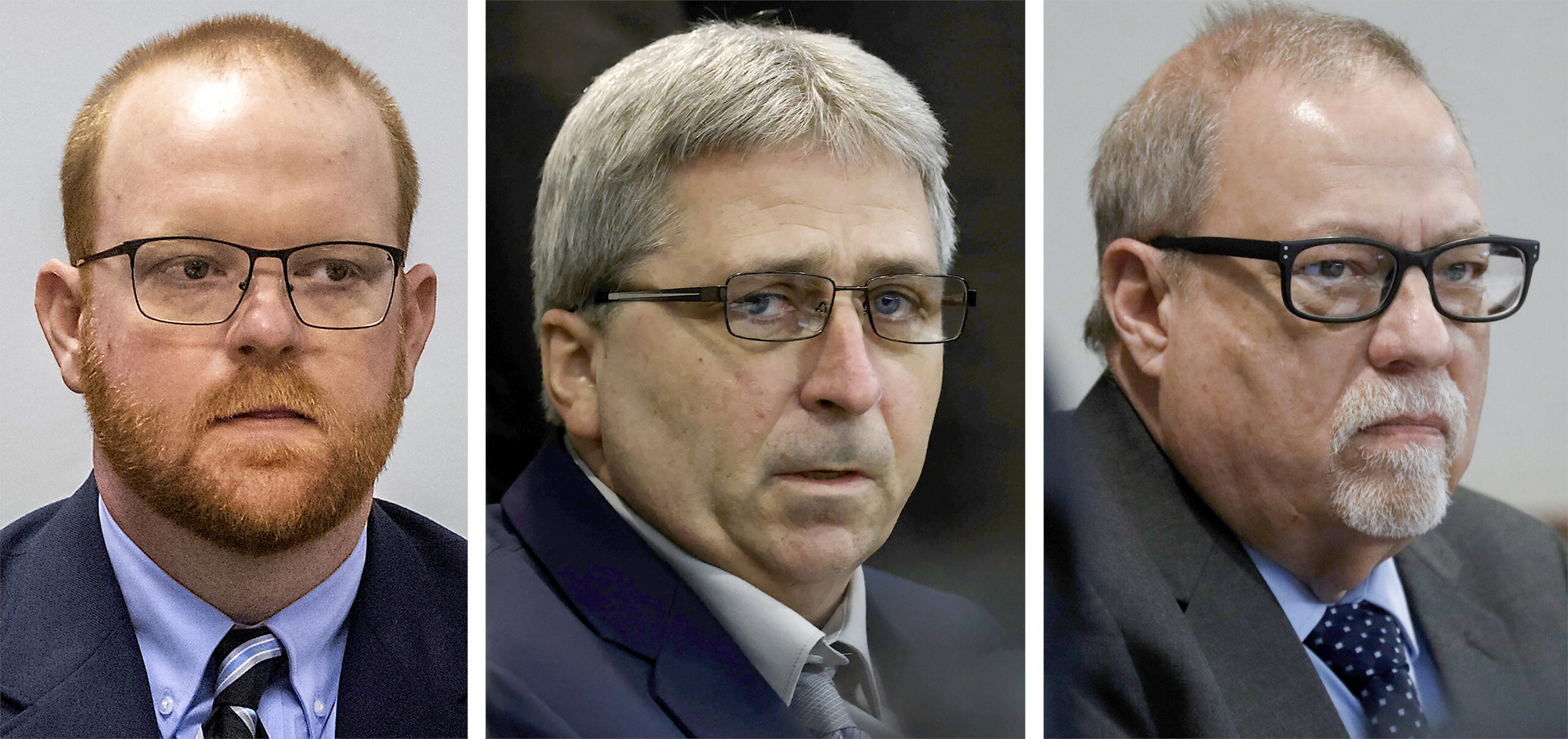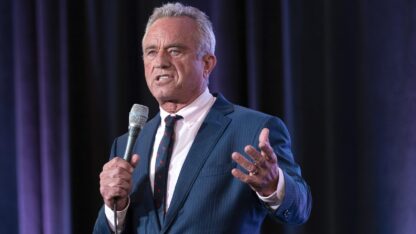When the pandemic hit last March, David was visiting his family on a furlough from the Swanson Center for Youth. That’s a state juvenile facility in Monroe, La. He was finishing up a four-year sentence that began when he was 17.
David (we’re not using his last name to protect his privacy) was planning on going “mudding” that weekend with some friends — riding all-terrain vehicles in a mud pit. But Swanson said he had to come back a day early.
On the drive back, David’s parents worried silently that they wouldn’t see him for a long time. “We try not to put our feelings on him,” says his mother, Judy. “But of course, he knew we were upset … all three of us cried when we left.”
In fact, David didn’t see his family again in person for nearly six months, until he was released. The state canceled all furloughs home, and all in-person visits due to the pandemic. It was more than one year later, on March 20, 2021, that those visits finally resumed.
For this story NPR visited young people and their advocates in Louisiana and spoke to advocates for court-involved youth around the country. They say the pandemic put the whole system in limbo, with some complex and contradictory effects. On the one hand, two different surveys estimate that the population of incarcerated youth dropped nationally, by a quarter to a third. That’s mainly driven by a drop in sentencing.
On the other hand, many incarcerated young people were denied access to in-person visits from their families throughout the entire pandemic. Education, which is legally required, has sometimes been delivered by Zoom or by written packet.
Other rehabilitation services — sports, vocational training, group therapy — have been sporadic. In the name of COVID-19 safety, teenagers have spent weeks in total lockdown.
“We’re causing harm to the children,” says Rachel Gassert of the Louisiana Center for Children’s Rights, which does legal defense and advocacy work. “We’re traumatizing them. And the damage that we’re doing in the name of public safety is immeasurable. And it’s going to be bad for the kids. It’s going to be bad for public safety.”
Lockdown
David says he spent the early pandemic on full lockdown: bored, sad and angry. “I think it was like two or three weeks went by. We were just stuck in a dorm for three weeks, 24 hours a day. Couldn’t go nowhere.”
His mother said he was “absolutely miserable … it’s just so horrible for a young child to feel as distraught as he was.” Before David was first granted furloughs, she spent two years driving eight hours round trip every weekend, staying in Monroe overnight and visiting him on both Saturdays and Sundays.
“We kept him positive,” she recalls. “But once we stopped seeing him, I felt so much more sadness in him, and anger.” No more rec time, no more welding classes. The dorm was crowded, and tensions were running high.
David said, and the state Office of Juvenile Justice confirmed, that several students escaped during this period. David said his fellow inmates ran off because they were scared.
“They didn’t know what the heck to think. They’re not hearing nothing but just the news. And I mean, they talk to their family every now and then, but they want to be with their family when stuff like this happens.” At another state juvenile facility in Louisiana, Bridge City, local news organizations reported a riot in April 2020 that sent a staff member to the hospital.
The Office Of Juvenile Justice did introduce Zoom visits in April, but David says they weren’t always available. And if you wanted to talk to your family beyond a limited allotment of time, it cost money. David said he gave a few fellow inmates access to his phone account so they could call home and check on family members who were sick with COVID-19.
As of February 2021, at least 3,753 cases of COVID-19 had been identified in youth corrections facilities. As cases popped up, administrators at those facilities limited movement. In December 2020, an outbreak in the juvenile detention center in New Orleans — a pretrial facility — triggered a lockdown.
“They couldn’t even talk on the phone to their families,” said Gassert. “These children were being held indefinitely without access to a lawyer or the courts, and they weren’t even convicted of a crime.” Unlike David, who quarantined in a dorm with several other inmates, Gassert says some of these teens were alone in their cells.
In May of last year, families of incarcerated youth in Louisiana sued the Office of Juvenile Justice, seeking their release. The plaintiffs alleged that the COVID-19 rule changes violated young people’s Constitutional rights to equal protection and constituted cruel and unusual punishment.
Their case failed. The state Office of Juvenile Justice successfully argued that given the circumstances, they were doing all they could to balance public health and rehabilitation.
In response to a request for an interview, the office provided NPR with a statement that read in part, “The Office of Juvenile Justice (OJJ) has concentrated efforts to focus on providing essential services to the youth in their custody during the evolving COVID-19 pandemic while maintaining both safety in our facilities and public safety. These efforts are informed by the evolving best practices put forth by the CDC and Louisiana Department of Health (LDH).”
Hailly Korman is an expert on justice-involved youth at the nonprofit Bellwether Education Partners. She says data is not comprehensive, but the denial of in-person visits, lockdowns and interruptions in access to education and other activities, all appear to be widespread in juvenile facilities around the country. As a result:
“They were already living in the experience of quite deep isolation and removal from their families and communities. And then a number of them lost what little contact they had.”
Gassert argues that denying young people visits isn’t just inhumane, it’s counterproductive. “There is a plethora of research that shows that family contact and family visitation is one of the most important factors in rehabilitation. These are the formative years of their life. And they’re going to go without seeing or touching or talking face to face with their family members for an entire year or more.”
Slowing the school to prison pipeline
But there’s another side to this story, Korman says. “We’ve seen across the country, since last March, some real decline in referrals to the juvenile justice system.”
The Annie E. Casey Foundation found that referrals into the system dropped by half last March and April, reducing youth incarcerated populations overall by 32 percent. The organization Youth First released a study in March 2021 that compared data across 31 states and found an average 24 percent drop in population between the beginning of the pandemic and October 2020.
This could be because judges had public health concerns about putting young people in close quarters. It could be because the pandemic slowed the workings of the justice system altogether, delaying trials and sentencing. It could also be because in places where schools were fully remote or hybrid, kids weren’t being arrested as frequently for truancy, fighting or bringing weapons to school. In other words, the school-to-prison pipeline may have been somewhat clogged by COVID-19.
This decline in the population of incarcerated youth is happening at a time when “prison abolition” is joining “defund the police” as a slogan for activists. Because of reforms, juvenile incarcerated populations have dropped by 65 percent since the year 2000, to about 37,000 youth as of 2018. Still, advocates note that the racial disparities in youth incarceration are enormous. For example, the Louisiana Center for Children’s Rights says that 99 percent of the teenagers arrested in New Orleans are Black, in a city that is 60 percent Black.
Korman and other advocates are hopeful that COVID-19 could be a natural experiment; a chance to crunch the numbers and find out whether “it was OK to close [youth prisons] because kids didn’t need to be in them, and we’re just as safe as we were before.” If so, she added, “that tells us something about the utility of these institutions.”
“The kids are not OK”
What happens next will depend in part on the outlook of elected officials. Like the new New Orleans district attorney, Jason Williams. He came to office in January 2021 as a progressive, pledging to increase “diversions” of teenagers–alternatives to incarceration, like probation and restorative justice. He tells NPR, “jail time and detention are not achieving public safety goals of intervening in young people’s lives so they don’t reoffend and stay system-involved.”
But Williams also says that, during the pandemic with so many teens idle, there’s been more — and more serious — youth crime. “We’re seeing carjackings involving young people, car thefts with young people. There is an uptick.”
Elizabeth Ostberg leads a network of alternative middle and high schools in the city. And she agrees with the DA that, just because incarceration might be down doesn’t mean teenagers in New Orleans are doing especially well this year. “The number of shootings and killings in the city is the highest it’s been in many years,” she says. There have been 195 homicides in 2020, compared with 121 in 2019, which already put the city in the top five in the country for its murder rate. “At one of our campuses, over the Christmas break, four different students got shot.”
Ostberg’s schools normally take in students who have been expelled; this year there have been no expulsions at all. Expulsions tend to happen because of offenses like fighting or bringing a weapon or drugs to school, and for most of this year, high schools have been remote.
“If I saw that students weren’t being expelled because they were doing better, I would be delighted.” But, Ostberg agrees with Williams that many students aren’t exactly thriving outside of the scrutiny of their schools.
“When I look at the number of students who are failing,” she says, “the number of students who are truant, the number of young people who are getting shot and shooting in the city, the very difficult circumstances that kids are living in … what that tells me is that … the kids aren’t OK.”
Peola Trumble-McKinnis agrees. She mentors youth at the Youth Empowerment Project in New Orleans. When a judge decides to divert a young offender from detention, YEP is one of the main places in the city that serves them. In previous years McKinnis would see her mentees three times a week, taking them to the movies or arcades as a way of motivating them and getting them to open up. The students could also meet in groups and support each other.
This year, she says her job has been harder than ever. “We don’t get a lot of the kids that want to be on Zoom with us. They’re on a computer all day for school, now they have to sit in front of the computer for the program. So sometimes they run, don’t want to answer the phone.”
Quiyshia, 17, is one of McKinnis’s former court-ordered mentees. She agrees it’s been really hard to stay motivated with school: “You don’t have nobody to push you, to keep you being on track. You just log off from Zoom and go do something else in your life.” Despite the challenges, Quiyshia stuck with it and graduated from high school this year.
Parents, meanwhile, might not know that their children aren’t engaging in remote learning, until they see a report card.
Williams, the district attorney, says he wants to increase capacity at diversion programs like YEP for what he expects will be an influx of young people as the pandemic wanes. “COVID, this idleness, this unchecked truancy, it’s going to cause us to need more space.”
In the end, David was able to come home about a month early on his four-year sentence. His victim had previously, in February 2020, testified in favor of releasing him.
He’s been home since September, working in the family landscaping business and hoping to start a side business welding, a passion he discovered at Swanson. “He’s got a bright future ahead of him,” says his mother of her youngest son.
Copyright 2021 NPR. To see more, visit https://www.npr.org.
9(MDAxODM0MDY4MDEyMTY4NDA3MzI3YjkzMw004))

9(MDAxODM0MDY4MDEyMTY4NDA3MzI3YjkzMw004))









